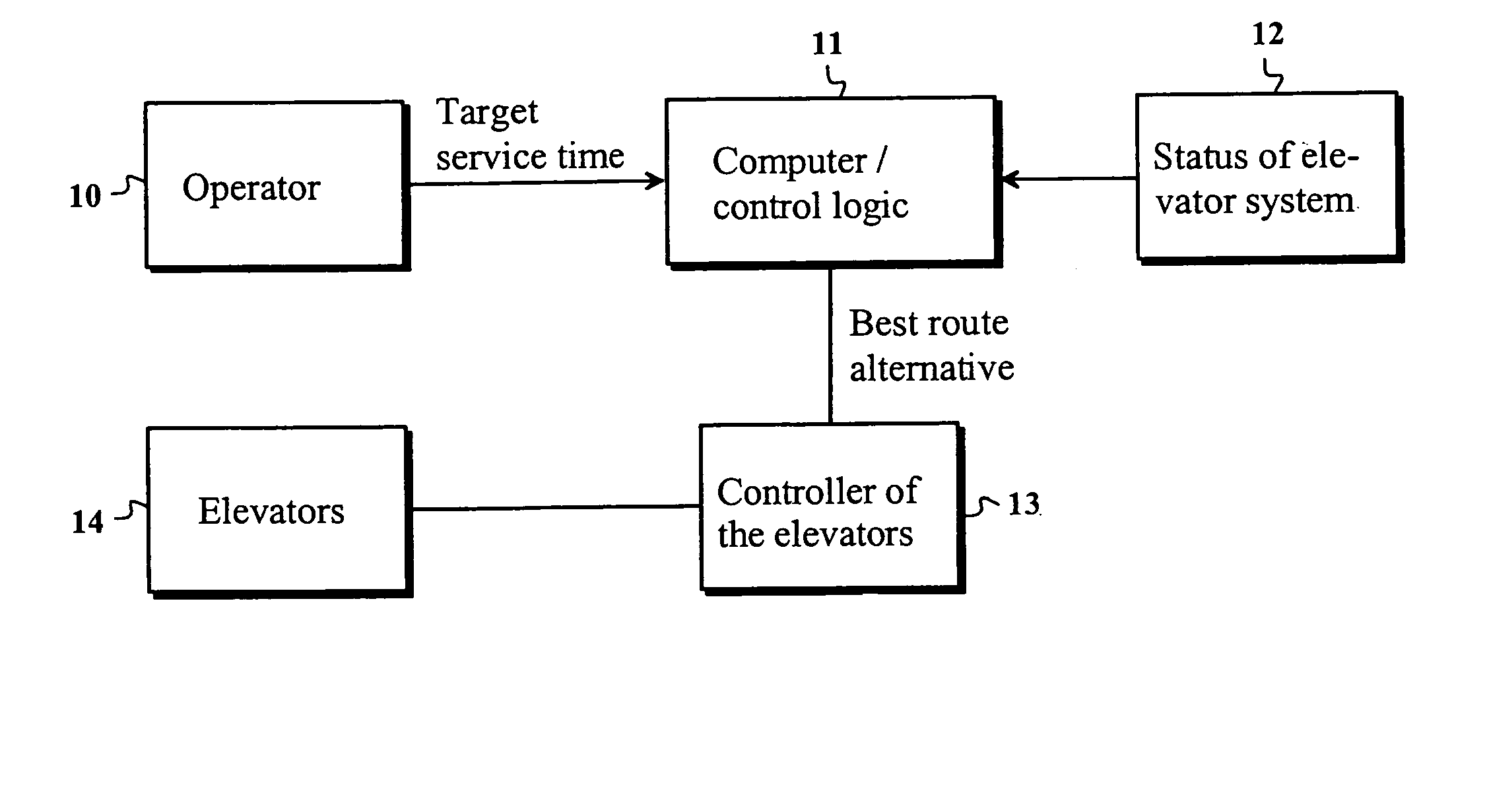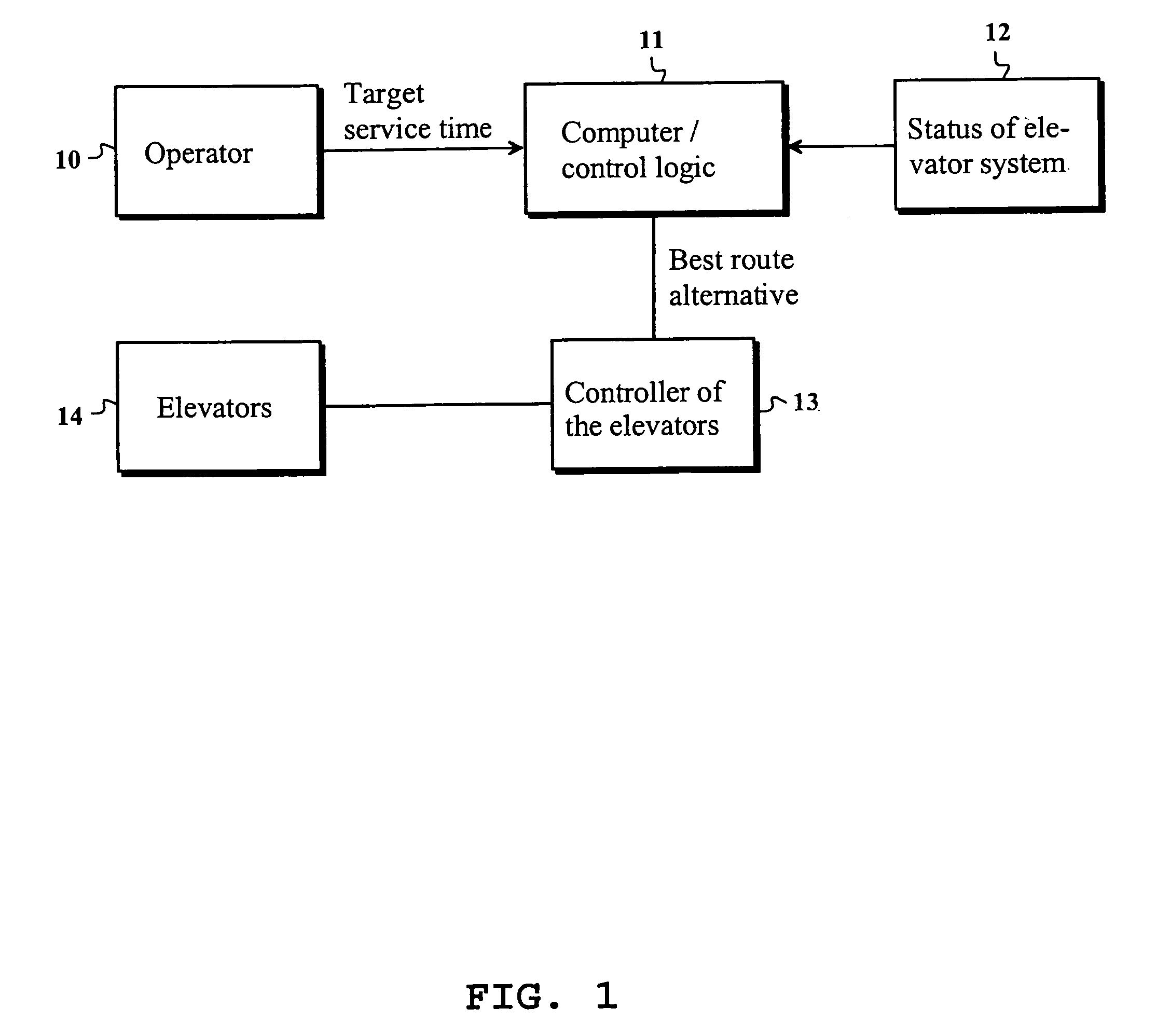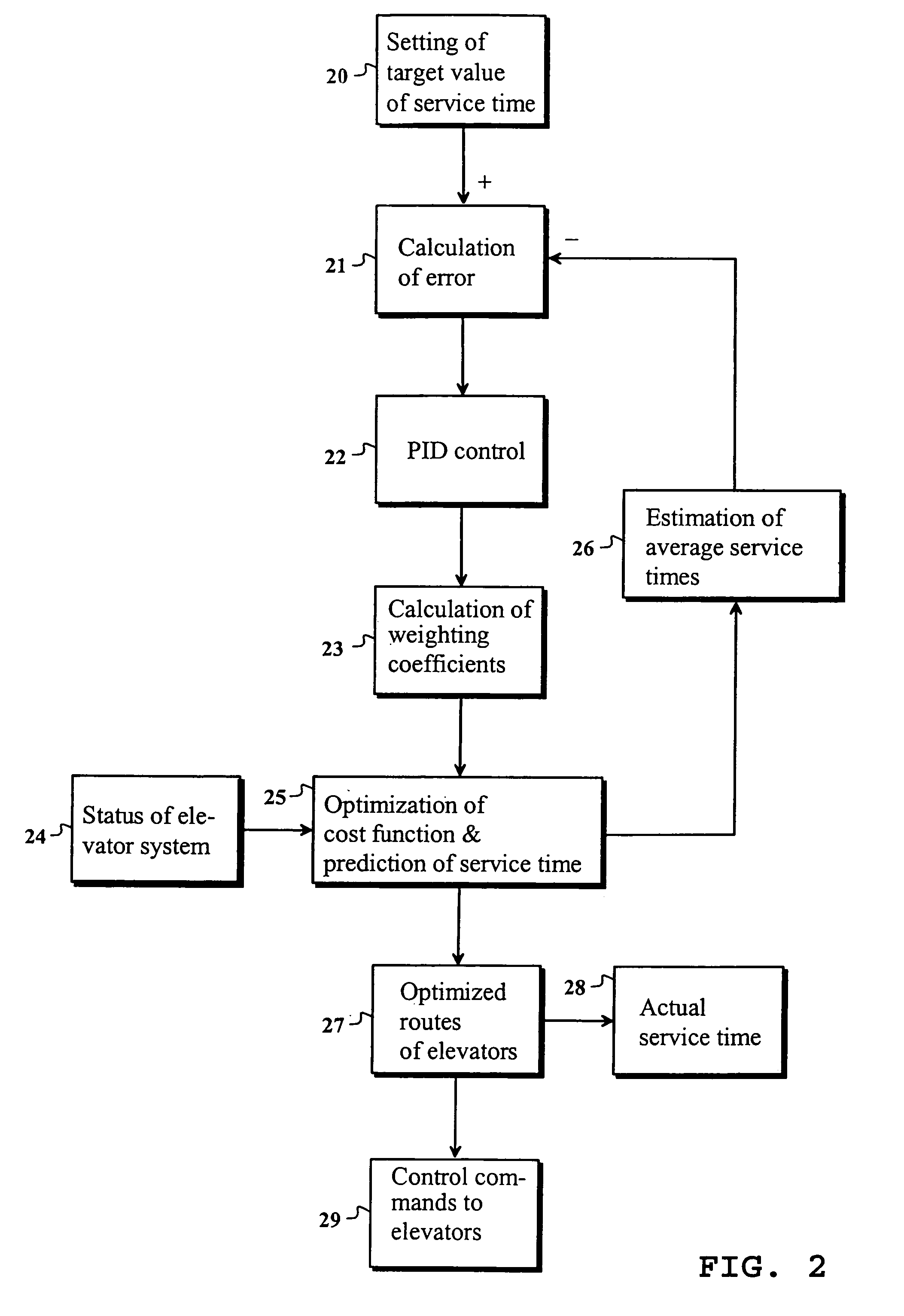Allocating landing calls in an elevator group using a cost function
a technology of cost function and elevator group, applied in the direction of elevators, hoisting equipment, sustainable buildings, etc., can solve the problems of inability to find a reasonable alternative, not having a reasonable alternative, and affecting the operation of traffic detectors, so as to reduce the energy consumed by the elevator system and improve construction and operation.
- Summary
- Abstract
- Description
- Claims
- Application Information
AI Technical Summary
Benefits of technology
Problems solved by technology
Method used
Image
Examples
Embodiment Construction
[0031]FIG. 1 presents an example of a system required by the present invention. The core of the system is a control logic 11, which may be implemented e.g. as a computer program that can be run on a computer. All the computing functions relating to the invention are carried out in the control logic. A target value of a desired service time is input to the control logic by the operator 10 of the system. In the present invention, the service time may be e.g. call time, passenger waiting time, traveling time or riding time. Service time may also refer to average values of the aforesaid times, such as e.g. average call time. Typically, the service time use is the waiting time, which is defined as the time interval from the instant of pressing a landing call button to the arrival of the elevator. The system naturally comprises at least one elevator 14. In practice, the movements of the elevators are taken care of by an elevator controller 13, which receives accurate information regarding...
PUM
 Login to View More
Login to View More Abstract
Description
Claims
Application Information
 Login to View More
Login to View More - R&D
- Intellectual Property
- Life Sciences
- Materials
- Tech Scout
- Unparalleled Data Quality
- Higher Quality Content
- 60% Fewer Hallucinations
Browse by: Latest US Patents, China's latest patents, Technical Efficacy Thesaurus, Application Domain, Technology Topic, Popular Technical Reports.
© 2025 PatSnap. All rights reserved.Legal|Privacy policy|Modern Slavery Act Transparency Statement|Sitemap|About US| Contact US: help@patsnap.com



